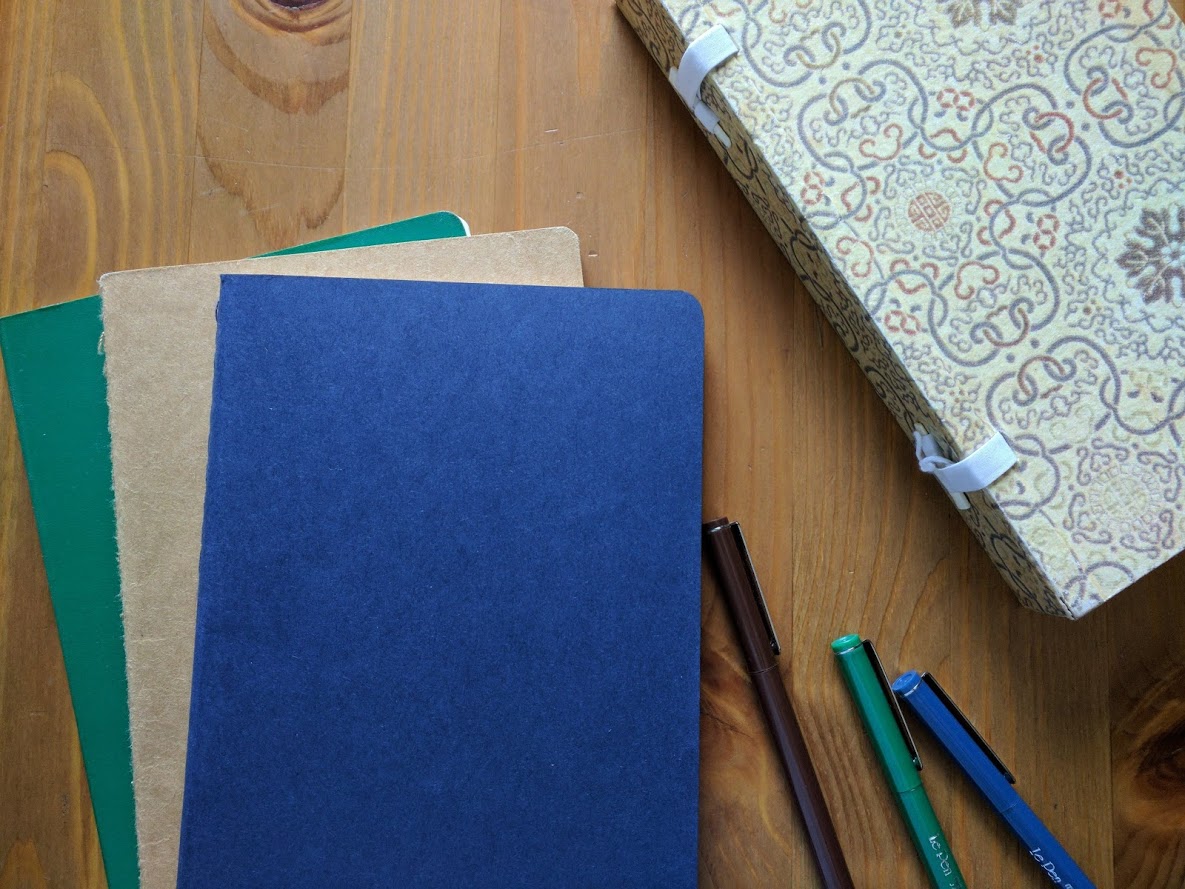Perhaps because it’s summertime, I’m drawn to the books on my writing shelves that are not proper resources, but still distinctly writer-ish: The Writer’s Desk is lovely, completely browseable, enduring and endearing.
Although I do think the prose that accompanies Jill Krementz’s photographs offers useful bits, the purpose of the book is clearly to house her images. She’s snapped more than 1,500 writers and 55 of their photographs appear here with commentary (mostly snipped from “The Paris Review” interviews).
When I first leafed through these pages, I thought it was interesting how many of the authors therein were pictured with old-school tools. Many of the subjects sit with paper and pencil; sometimes you can tell they are working with a print-out, other times, as with Georges Simenon’s image, the sharpened pencils are outnumbered only by the pipes, so that you can’t help but recognize a tangible, long-hand world.
The typewriters clearly outnumber the computers. This fact stood out to me at the time because I was still at the stage where I desperately wanted to know if I was “doing it right”. Could I be a real writer if I sometimes wrote long-hand, sometimes pounded on my mother’s old Royale, and other times tapped away at a desktop and other times on a laptop? These photographs say “yes”.
My laptop at the time was an older-model IBM and seemed much larger and bulkier than the laptops that Krementz captured in these writers’ workspaces. But now leafing through this collection, I’m fascinated by how dated the computers in these photographs are.
Next to Ray Blount Jr.’s image is this: “Why write, when you can watch a movie on your typewriter?” It must have seemed astonishing at the time. Now, you can download films while an app writes your novel for you. Mona Simpson’s laptop was likely cutting-edge, as was Amy Tan’s. I probably lusted after Cathleen Schine’s sweet little white number pre-dating the customizable skins now available and only Veronica Chambers’ looks snazzier. Now, you can revise your working draft on your mobile when you’re waiting to cross at a traffic light.
Flipping the pages, you can see Edwidge Danticat’s fax machine, its many buttons seeming to taunt Jean Piaget’s ancient radios. And Stephen King’s touchtone phone and scanner seem to shove all the rotary telephones into another century. But the images in The Writer’s Desk still feel timeless to me. I love this book as much as I did when I first got my own copy and I think my affection will hold fast through the next decade as well.
Good fun for writers.
Jill Krementz’s The Writer’s Desk (Random House, 1996)

